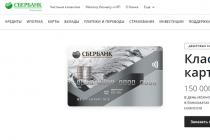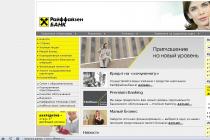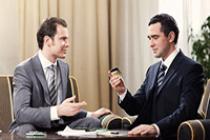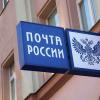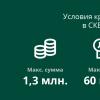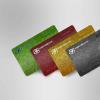The official currency in Denmark is the Danish krone. It has been used in circulation since 1873. In the course are coins and banknotes of various denominations. What do we know about development Danish krone?
Krona and its history in Denmark
The modern European crown will soon be 140 years old. On the territory of Denmark, euros and crowns are in circulation, but it is crowns that deserve special attention.
The very word "crown" in translation from the Scandinavian language means "crown". Until 1873 in the country in cash flow there was a so-called rikstaller. The position of this currency was weak, the whole system needed restructuring, so the Danes chose the krone as a way to improve and stabilize the economy.
For a long time, Denmark, Norway and Sweden were in a "monetary union", using a single currency. When the union broke up, each country only slightly changed the appearance of coins and banknotes. Thus, the first Danish krone was born.
During the Second World War, Denmark experienced a serious financial crisis, which happened due to the forced binding of the crown to the reymark. In the 70s, the Danish state managed to restore the value of the krone in its territories. Today, this currency is tightly pegged to the euro.
Appearance of Danish kroner
Today, 1 crown in Denmark equals 100 øre. In circulation there are coins in the 50 era, as well as coins in one, two, five, ten and twenty crowns.

Danish krone banknotes are marked with denominations of 50, 100, 200, and 500 kr. Banknotes and 1000 crowns each are issued.

Danish money looks like this:
- The fifty crowns bear the Sallingsund bridge and the vessel from Skarpsalling;
- On a hundred crowns, you can find a drawing of the Little Belt bridge and the Hinsgavl dagger;
- Two hundred crowns are decorated with a Knippelsbro bridge and a belt plate;
- On five hundred crowns, the bridge of Queen Alexandrina and a bronze vessel are drawn;
- A thousand crowns adorn the Great Belt and the sun wagon.
The Danes are sensitive to their history and sights, so they placed similar images on their banknotes.
Features of Danish money
In the Faroe Islands, Faroese kroner is in circulation, which is exchanged for Danish krone without commission, and is exchanged at the rate of one to one.
« Faroese and Danish money differ only in denominations, coins in use in Denmark and Faroe Islands the same».
Greenland uses the same crowns as Denmark. During the vote, the Greenlanders even abandoned the personal design of money, saying that it was more convenient for them.
In Copenhagen, money changers are open 24 hours a day. More money in Denmark can be exchanged for national currency banks and post offices. There are also commercial exchangers in the country. The Danish krone itself is not as common outside of Denmark as the euro or other national European currencies. Despite this, the krone in Denmark is resistant to global crises and has not lost its economic position for several decades.
According to Central Bank Russian Federation on March 17, 2020, the price for 1 Danish krone (DKK) is 11,118 Russian ruble(RUB). Compared to the previous business day, the change was +0,1627 Russian ruble. To view the archive of the Danish krone rate, click on the "Today" link and select the required date using the calendar.
This chart will help you quickly get information about the quotes of the Danish krone against the ruble in the Forex market in real time. The user is given the opportunity to customize the terminal in accordance with their preferences, choosing the style of the bars, setting up the indicators. Updated online, DKK/RUB currency quotes reflect real-time forex trading.
| date | Central Bank rate | Change | Percent |
|---|---|---|---|
| Today, Tue | 1 DKK = 11.12 RUB | +0,16 RUB | +1,49 % |
| March 14, Sat | 1 DKK = 10.96 RUB | -0,21 RUB | -1,87 % |
| March 13, Fri | 1 DKK = 11.16 RUB | +0,33 RUB | +3,07 % |
| March 12, thu | 1 DKK = 10.83 RUB | -0,15 RUB | -1,36 % |
| March 11, Wed | 1 DKK = 10.98 RUB | +0,81 RUB | +7,96 % |
| March 7, Sat | 1 DKK = 10.17 RUB | +0,32 RUB | +3,23 % |
| March 6, Fri | 1 DKK = 9.85 RUB | -0,03 RUB | -0,30 % |
| 5 march, thu | 1 DKK = 9.88 RUB | -0,01 RUB | -0,10 % |
| March 4, Wed | 1 DKK = 9.89 RUB | +0,05 RUB | +0,52 % |
| March 3, Tue | 1 DKK = 9.84 RUB | -0,04 RUB | -0,44 % |
| February 29, Sat | 1 DKK = 9.88 RUB | +0,28 RUB | +2,90 % |
| February 28, Fri | 1 DKK = 9.61 RUB | +0,06 RUB | +0,65 % |
| 27 february, thu | 1 DKK = 9.54 RUB | +0,10 RUB | +1,08 % |
| February 26, Wed | 1 DKK = 9.44 RUB | +0,14 RUB | +1,50 % |
Dynamics of the official exchange rate of the Danish krone against the ruble according to the Central Bank of Russia
The graph shows the dynamics of changes in the value of 1 Danish krone (DKK) against the ruble (RUB). With the help of quick links, or a horizontal ruler under the chart, you can select any period of time that interests you.
For the period you selected, the minimum price for 1 Danish krone was ($ min|number:4 $) Russian ruble. It was ($ min|date:"d MMMM yyyy" $) year. The maximum price for 1 Danish krone was fixed ($ max|date:"d MMMM yyyy" $) at ($ max|number:4 $) Russian ruble
Cross-currency rates from the Central Bank of the Russian Federation
Cross-rates of currencies are prepared on the basis of the official exchange rate Russian ruble To foreign currencies established central bank Russian Federation as of March 17, 2020.
| Currency | Cross course |
|---|---|
| Ruble to Danish krone | 1 USD = 0.0913 DKK |
| Danish krone to Australian dollar | 1 DKK = 0.2378 USD |
| Danish krone to Azerbaijani manat | 1 DKK = 0.256 AZN |
| Danish Krone to Armenian Dram | 1 DKK = 72.4979 AMD |
| Danish krone to Belarusian ruble | 1 DKK = 0.35 BYN |
| Danish Krone to Bulgarian Lev | 1 DKK = 0.2617 BGN |
| Danish Krone to Brazilian Real | 1 DKK = 0.7172 BRL |
| Danish Krone to Hungarian Forint | 1 DKK = 45.2721HUF |
| Danish Krone to Korean Won | 1 DKK = 182.4248 KRW |
| Danish Krone to Hong Kong Dollar | 1 DKK = 1.1624 HKD |
| Danish krone to dollar | 1 DKK = 0.1497 USD |
| Danish krone to euro | 1 DKK = 0.1338 EUR |
| Danish Krone to Indian Rupee | 1 DKK = 11.0742 INR |
| Danish krone to Kazakh tenge | 1 DKK = 60.8445 KZT |
| Danish Krone to Canadian Dollar | 1 DKK = 0.2071 USD |
| Danish Krone to Kyrgyzstani Som | 1 DKK = 10.9097 KGS |
| Danish Krone to Chinese Yuan | 1 DKK = 1.0468 CNY |
| Danish Krone to Moldovan Leu | 1 DKK = 2,639 MDL |
| Danish krone to Turkmen manat | 1 DKK = 0.5232 TMT |
| Danish krone to Norwegian krone | 1 DKK = 1.507 NOK |
| Danish Krone to Polish Zloty | 1 DKK = PLN 0.5843 |
| Danish Krone to Romanian Leu | 1 DKK = 0.6449 RON |
| Danish Krone to SDR (Special Drawing Rights) | 1 DKK = 0.108 XDR |
| Danish Krone to Singapore Dollar | 1 DKK = 0.2108 SGD |
| Danish Krone to Tajikistani Somoni | 1 DKK = 1.4512 TJS |
| Danish Krone to Turkish Lira | 1 DKK = 0.9422 TRY |
| Danish krone to Uzbek sum | 1 DKK = 1426.0647 UZS |
| Danish krone to hryvnia | 1 DKK = 3.9063 UAH |
| Danish Krone to Pound Sterling | 1 DKK = 0.1187 GBP |
| Danish krone to Czech krone | 1 DKK = 3.4926 CZK |
| Danish Krone to Swedish Krona | 1 DKK = 1.4594 SEK |
| Danish Krone to Swiss Franc | 1 DKK = 0.1416 CHF |
| Danish Krone to South African Rand | 1 DKK = 2.4432 ZAR |
| Danish krone to Japanese yen | 1 DKK = 15.8705 JPY |
Danish krone information
The Danish krone is the official currency of the Kingdom of Denmark. This currency is also in circulation in the Faroe Islands and Greenland. Bank code- DKK. In 1 crown - 100 era. Valid banknotes: 50, 100, 200, 500 and 1,000 crowns. Coins - 1, 2, 5, 10, 20 crowns and 50 ore. On October 1, 2008, coins were withdrawn from circulation in the 25th era; after October 2011, banks do not exchange them.
On the front side of the Danish banknotes - bridges, on the reverse side - archaeological sites and finds. On the obverse of the coin in the 50th era - the crown and the word "Denmark", on the reverse - the face value. Coins of denominations of 1, 2 and 5 crowns differ only in size: in the center of the coins there is a round hole, on the obverse - the royal monogram, on the reverse - an ornament and a denomination. Coins of 10 and 20 crowns are decorated with the image of the queen and the coat of arms of the state.
Historical reference
Historians believe that banknotes originated in Denmark at the beginning of the 11th century. These were silver coins minted at the court of King Canute. Since then, coins have always depicted a portrait or monogram of the monarch.
For many centuries, the main money of Denmark was rigstalers, the krone appeared in 1875. According to the rigid gold standard, 2,480 crowns were equated to one kilogram of gold. Denmark, along with Sweden and Norway, was a member of the Scandinavian Monetary Union, which lasted until the outbreak of World War 1914. After the collapse of the union, the countries acquired their own currencies, but in 1924 Denmark decided to return the gold standard, it was possible to comply with it until 1933.
During the Nazi occupation of 1940-1945. the crown was tied to the Reichsmark. When World War II ended, a new benchmark was chosen - the pound sterling. The original exchange rate of the krone against the British pound was 24.1, but very soon the krone was worth 19.3 per pound ($4.8). The Danish krone was devalued twice: in 1949 to $6.9 and in 1967 to $7.5.
In 2000, following a referendum, Denmark refused to join the euro currency area. More than half of the Danes voted against the entry in the face of a rather high turnout at the polling stations. But, since Germany remains Denmark's main trading partner, the country is very dependent on euro fluctuations. The European crisis of 2011 slightly lowered the kroon against world currencies. In mid-November 2014, for one crown they give - $0.16, €0.13 or 7.9 rubles.
Faroese krone
The Faroe Islands are part of the Kingdom of Denmark and print their own money, at a rate of 1:1 to the Danish krone. Danish banks exchange Faroese krona without commission. Formally, in the Faroe Islands, Danish kroner should not be accepted for calculations, but in reality the rule is not respected. But in Denmark, Faroese money is almost unknown and it is quite difficult to pay with it.
Crowns in Greenland
Greenland kroner did not remain in regional status even in its best years, and since 1968 this currency has gone out of circulation on the island. Outside of Greenland, this money almost did not appear even as a souvenir. The Danish government planned to revive the krone in 2011, but the Greenlandic leadership decided to postpone this event. Legally, Greenland, which is larger than Denmark, belongs to it. Officially, the Greenlandic krone served as the currency from 1874 to 1967. There were also quite exclusive money in Greenland, for example, one of the mining companies printed its own currency for intra-corporate settlements, and this went on for quite some time.
Economy of Denmark
Denmark is a country with an industrial-agrarian economy and a high level of development. More than 40% in national income accounts for industry, and in terms of turnover in foreign trade per capita, it is ahead of the rest of Europe.
The leading industries in Denmark are: metalworking, machine and shipbuilding, production of electrical and electronic equipment, textile, food, chemical industries. The agricultural sector is dominated by meat and dairy farming. There are few minerals in Denmark, so the country is very dependent on foreign markets. At the same time, Denmark is quite independent in terms of energy resources; an oil field has been discovered on the shelf of the North Sea.
The country's economy is undergoing changes. If 20 years ago there were 200,000 farms in Denmark, now there are only 70,000, albeit small ones. farms almost gone. Also, due to the increased competence of specialists, the number of people employed in agriculture- from 20% to 6%. Fishing is well developed in Denmark, and numerous seaports take ships on the coasts.
The standard of living in Denmark is one of the highest in the world, and the Danish krone is convertible and traded successfully in Forex. But at the same time, this currency is directly dependent on the euro due to very close economic ties. You can import and export currency from the country without restrictions, but when exporting cash in excess of 50,000 kroons, you must fill out a declaration indicating the origin of the funds. This is how the Danish authorities fight money laundering.
How much will
For convenience, a quick “calculator” is presented to help you understand which banknote costs how much. The information is current as of March 17, 2020 according to the Central Bank.
| Currency | Conversion |
|---|---|
| 5 DKK | $55.59 |
| 10 DKK | $111.18 |
| 25 DKK | 277.95 RUB |
| 50 DKK | 555.9 RUB |
| 100 DKK | 1111.8 RUB |
| 250 DKK | 2779.5 RUB |
| 500 DKK | 5559.0 RUB |
| 1000 DKK | RUB 11,118.0 |
| 2500 DKK | RUB 27,795.0 |
| 5000 DKK | RUB 55,590.0 |
| 10 000 DKK | RUB 111,180.0 |
| 25 000 DKK | RUB 277,950.0 |
| 50 000 DKK | RUB 555,900.0 |
| 100 000 DKK | RUB 1,111,800.0 |
The krone is the currency of Denmark, including the autonomous province of Greenland and the Faroe Islands. The crown is divided into 100 era (singular and plural are the same). Code ISO 4217 - DKK; the Danish abbreviation is "kr". Variants of DKR or Dkr are sometimes used, but they are not official.
Story
Until the end of the 18th century, the crown at face value was equal to 8 marks. The new krone appeared in Denmark in 1873. She changed the Danish rikstaler. Two crowns made one rikstaler. The krone emerged as a result of the formation of the Scandinavian monetary union, which survived until the First World War. The original members of the monetary union were Sweden and Denmark, two years later Norway joined them. The crown was backed by gold: 2480 kroner was 1 kg of pure gold.
In Denmark and Norway, the currency was called "krone" (see "Norwegian krone"), and in Sweden - "krona" (both of these words are translated as "crown"). After the collapse of the monetary union, Denmark, Norway and Sweden decided not to change the name of their currency.
The Scandinavian Monetary Union collapsed in 1914 when the gold standard was abolished. Denmark returned to the gold standard in 1924, but abandoned it again in 1931. In 1940-45, the krone was pegged to the German reymmark. After the end of the German occupation, 24 crowns were equal to 1 British pound, but in August of that year this ratio fell to 19.34 (4.8 crowns = 1 US dollar). Under the Bretton Woods system, Denmark devalued its currency in 1949. 6.91 crowns amounted to one dollar. A further devaluation in 1967 resulted in a ratio of 7.5 crowns/dollar, 18 crowns/pound.
Faroe Islands and Greenland
In the Faroe Islands, Danish coins are in circulation, but they have their own banknotes (see "Faroese krone"). During the British occupation during the Second World War, there was a shortage of small coins, which pushed Britain to mint copies of Danish coins in 1, 2, 5, 10 and 25 eras specifically for the Faroe Islands. The first three denominations were minted from bronze, the last two - from an alloy of copper and nickel. These coins looked like pre-war Danish ones, but they had the year 1942 and were missing a small heart - a sign of belonging to the Royal Danish Mint in Copenhagen. Denmark did not mint similar coins this year because the country switched to zinc. Banknotes were printed by the local administration and did not circulate outside the Faroe Islands.
Modern Faroese banknotes appeared in the 1950s. Contrary to popular misconception, the Faroese krone is not an independent currency - it is a special design Danish krone.
In Greenland, the colonial administration printed individual banknotes from 1803-1968 and coins from 1926-1964 (see "Greenland rikstaler" and "Greenland krone"). In 2006, the Danish government and the autonomous government of Greenland announced that separate Greenlandic banknotes would be available by 2008. They, like the Faroes, will receive the status of a variation of the Danish krone.
Because of this status, Danish banknotes circulate in Greenland and the Faroe Islands and are exchanged for local banknotes at a ratio of 1:1.
Attitude towards the euro
Denmark did not accept the Maastricht Convention, which allowed the country to keep its currency when most of the EU switched to the euro in 1999. According to the results of a referendum held in 2000, the country refused to accept the euro. The liberal-conservative government of Anders Fogh Rasmussen planned to hold another referendum in 2004, but the plan was not carried out because the polls did not show support for the euro. The government still wants to introduce the euro in Denmark.
The kroon/euro ratio is supported by the European regulation mechanism exchange rates. Before the advent of the euro, the krone was linked to the deutsche mark, which should have made it stable.
According to Anders Fogh Rasmussen, Denmark will adopt the euro in 2008.
coins
The coins are issued by the National Bank of Denmark. When the krone was introduced in the 1870s, coins were minted in 1, 2, 5, 10 and 25 öre and 1, 2, 10 and 20 krone. Coins for 1, 2 and 5 eras were bronze, for 10, 25 eras and for 1 and 2 crowns - silver, and 10 and 20 crowns - gold. Gold coins ceased to be minted in 1917 and silver coins in 1919. Iron replaced bronze in 1918 and 1919. In 1920, 10- and 25-er coins made of an alloy of copper and nickel appeared, and in 1924, coins of 1 and 2 crowns made of an alloy of aluminum and bronze 1: 1 appeared.
In 1941, zinc coins for 1, 10 and 25 eras and aluminum coins for 2 and 5 eras appeared. A year later, zinc coins for 2 and 5 eras began to be minted. Abandoned coins of 50 era and 2 crowns. In 1946, coins of 10 and 25 eras made of an alloy of copper and nickel appeared again, and a year later - coins of 2 crowns of aluminum and bronze. In 1960, a 5-crown coin appeared, and the 2-crown coins disappeared. In 1963, the coins for 1 and 2 eras were abandoned, and in 1979, coins for 10 crowns appeared. In 1986, they stopped minting coins for 5 and 10 eras. They ceased to exist. In 1989-1992, 50 öre, 2 and 20 crown coins appeared, so the following coins are now in circulation:
The 25-er coin will cease to be issued on October 1, 2008. This decision was made due to the high cost of production and the decrease in purchasing power coins. It can be exchanged for national bank indefinite period of time.
| 50 ore |
| 1 crown |
 |
| 2 crowns |
 |
| 5 crowns |
 |
| 10 crowns |
 |
| 20 crowns |
 |
Banknotes
In 1875 National Bank introduced banknotes of 10, 50, 100 and 500 crowns, and in 1898 - 5 crowns. Several private banks have issued banknotes since 1891, including Aalborg Kreditbank, Aarhus Kreditbank, Dansk Købmandsbank, Esbjerg Kreditbank, Fredrikshavn Kreditbank, Hjørring Kreditbank, Odense Kreditbank, Randers Kreditbank, Thisted Kreditbank, Varde Kreditbank and Vejle Kreditbank. Denominations - 10 and 25 ore, 1, 2, 5, 10, 20, 25 and 50 crowns.
In 1914, in connection with the outbreak of the First World War, banknotes of 1 crown appeared, which were printed until 1921. In 1945, the allied command issued banknotes for 25 öre, 1, 5, 10, 50 and 100 crowns.
In 1960, the 5-crown banknotes were replaced by coins. Banknotes of the new denomination did not appear until 1972, when 1000 kroner notes began to be printed. In 1979, the 10-crown notes were replaced by coins, and 20-crown notes appeared, although they have since been replaced by coins (notes of both denominations are still in circulation).
Danish krone- the official currency of the Kingdom of Denmark, as well as Greenland and the Faroe Islands. Bank code - DKK. 1 crown is equal to 100 era. Denominations of valid banknotes: 1,000, 500, 200, 100 and 50 crowns. Coins: 20, 10, 5, 2, 1 crown and 50 ore.
The main theme of the banknotes is Danish bridges on the front side and archaeological finds in Denmark on the back. The 50-kroon note depicts the Sallingsund Bridge, which connects the island of Mors and the Saling Peninsula, built in 1973 and has a length of 1,717 m, and on the back - a stone age vessel; on 100 crowns - the Lillebeltsbro bridge in the vicinity of Middelfart across the Little Belt between the islands of Funen and the Jutland peninsula and the Hndskavl dagger - an archaeological find dating from approximately 2400-1800 BC. e.; on 200 crowns - the Knippels bridge in Slotsholmen near Copenhagen and the image of a belt buckle from Landstrup (Bronze Age); on 500 crowns - the bridge of Queen Alexandria, connecting the islands of Zeeland and Mon, as well as a bronze vessel found in Keldby; on 1,000 crowns - the world's third longest suspension bridge Belt, connecting the islands of Funen and Zeeland, as well as a work of art from the Bronze Age - a miniature sculptural image of the Sun Wagon, stored in the National Museum of Denmark in Copenhagen.
The 50 øre coin contains a crown and the inscription “Denmark” on the obverse, and the denomination in the national ornament on the reverse. Coins of 1, 2 and 5 crowns are identical in design and differ only in size: a hole in the center, on the obverse - the queen's monogram, on the back - a national ornament, on top - the denomination, on the bottom - the name of the country. On the front side of the coins 10 and 20 crowns - the image of the queen, her name in a circle and the year of minting, on the reverse - the coat of arms of Denmark: three lions and nine hearts under one small crown on top.
According to historians, money turnover on the territory of Denmark can be dated to the beginning of the 11th century, when the first silver coins were minted under King Canute the Great in the city of Lund. Since then, a tradition has developed according to which the monogram or portrait of the current monarch is depicted on coins to this day and his name is written.
For centuries the main monetary unit the rigstaler was considered, and the crown became such after the reform of 1875. Then a hard gold standard was introduced, according to which 2,480 crowns were equal to 1 kg of pure precious metal. During this period, Denmark, Norway and Sweden were part of the Scandinavian currency union which lasted until the First World War.
It collapsed in 1814 and countries introduced their own currencies, but by 1824 Denmark had returned to the gold standard and stuck to it until 1933. During the occupation period from 1940 to 1945, the krone was pegged to the Reichsmark. And at the end of the war, the British pound sterling became the reference point.
Initially, the exchange rate was fixed at around 24 crowns per pound, but in the same year the krone strengthened to 19.34 per pound (or 4.8 per US dollar).
Within the Bretton Woods monetary system The kroon experienced two devaluations: in 1949 to 6.91 and in 1967 to 7.5 per US dollar.
In 2000, a referendum was held in Denmark, as a result of which the country refused to join the euro zone - 53.2% of the population voted against with a turnout of 87.6%. However, to date, the change in the course of the unified European currency significantly affects the Danish economy, since Germany is its main trading partner. Thus, the European debt crisis of 2011 lowered the krone against other currencies. In the spring of 2012, it fluctuates between 7.42-7.43 crowns per euro and 5.66-5.67 per US dollar. For 1 kroon they give 5.10–5.20 rubles.
Denmark is a developed European country, today there is one of the most high levels life in the world, the national currency is freely convertible and traded on Forex market. At the same time, we repeat: it should be taken into account that the Danish krone is in direct correlation with the euro due to the economic ties of the region.
Import and export of cash currency, its exchange in Denmark is not limited. The only requirement is that when exporting more than 50 thousand kroons in cash, you must fill out a declaration indicating the source of funds, but this is not a requirement currency regulation but a way to counter money laundering.
Since the Kingdom of Denmark, even being a member of the EU, is not part of the Eurozone, it has its own national currency - the Danish krone. There were attempts to introduce the euro, but the majority of the population voted against such a decision in a referendum held in 2000.
One Danish krone (its international alphabetic code is DKK, digital is 208) includes 100 øre. In circulation there are coins in denominations of 50 øre, 1, 2, 5, 10 and 20 crowns and banknotes in denominations of 50, 100, 200, 500 and 1000 Danish crowns.
To exchange money, you can contact banks, post offices or specialized exchange offices. In the capital, round-the-clock machines operate for these purposes. Some hotels also offer their services, but the rate there is extremely unfavorable. Best deals you can find in FOREX points or post offices.
Danish krone to ruble exchange rate
Banks of the country work on weekdays from 9.30 to 16.00 (on Thursday - until 18.00). Saturday and Sunday are days off. Exchange offices work daily without days off - until 22.00. Banks at airports and train stations operate according to their staffing tables(usually longer than other banks).
Almost all hotels, shops, cafes and restaurants accept credit cards. There will be no problems with finding an ATM. Despite long history Denmark, its currency is one of the oldest currencies in Europe: this year the Danish krone will celebrate its 140th birthday.
The first money appeared in the Viking Age and were small pieces of silver, but foreign coins were most often used - won back during numerous raids and robberies. The local currency became dominant only in 1070.
Shillings appeared, then rigsdalers, rigsbank dalers, rigsdalers returned to use again and only in 1873 crowns appeared. Modern Danish kroner not only evaluates goods and services, but also introduces the sights and prominent figures of the Kingdom.
In addition to the Danish krone on the territory of the Faroe Islands (an autonomous region of the Kingdom), the Faroese krone is in circulation - exclusively banknotes. The Greenlandic crown was planned to be used in Greenland, but the attempt was unsuccessful.


